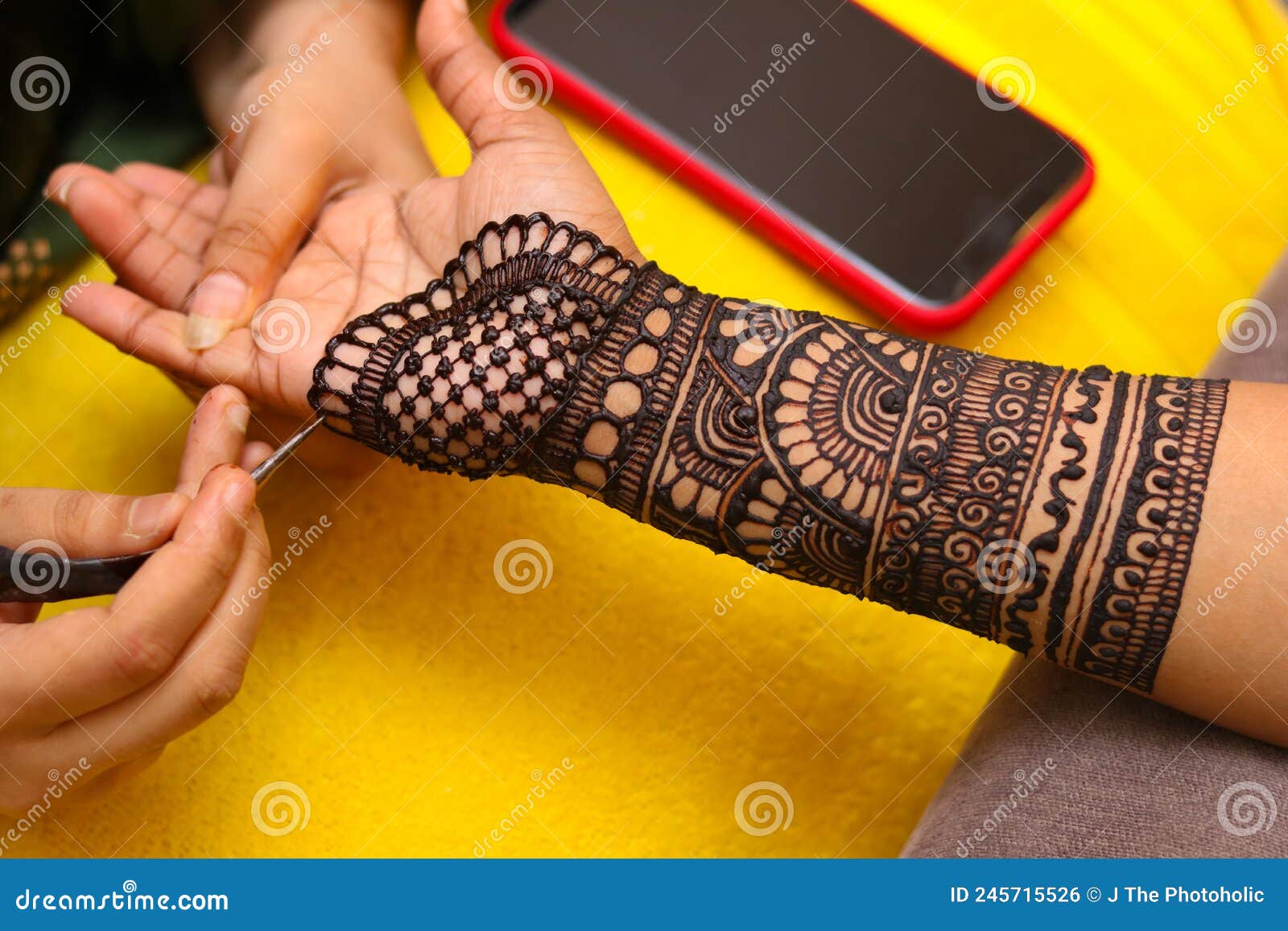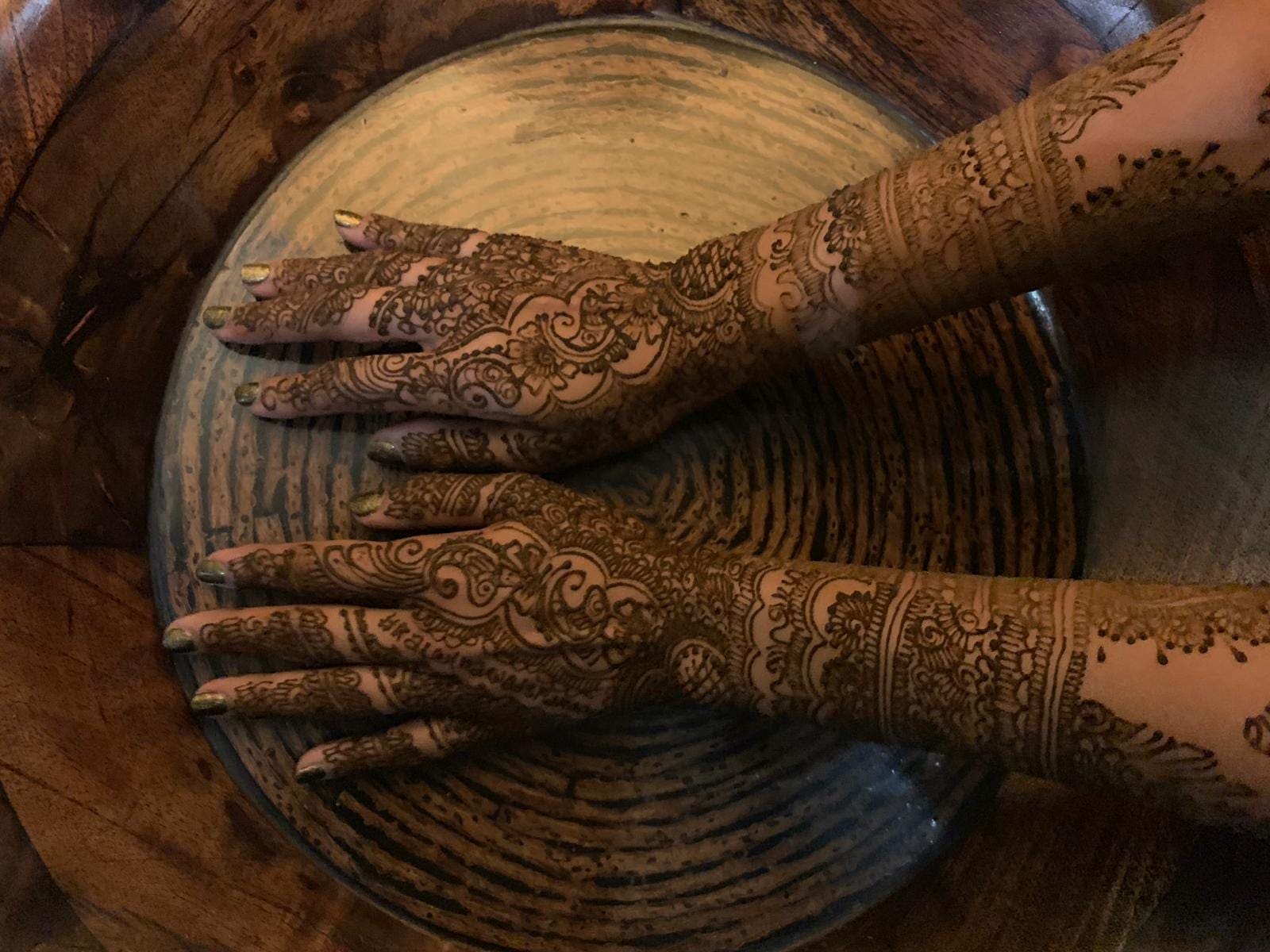Discover Henna Mehndi: Art, History, And Stunning Designs Unveiled!
Ever wondered about the intricate designs gracing hands at weddings, festivals, or even red carpets? Henna mehndi isn't just a fleeting trend; it's a profound art form steeped in history and cultural significance, a narrative etched onto skin. Its more than mere decoration; it's a living tapestry woven with stories, meanings, and emotions that have resonated across millennia. Lets embark on a journey to uncover the magic that makes henna mehndi such a cherished tradition.
To truly appreciate henna mehndi, one must step into a realm where artistic expression intertwines with deep-seated spirituality. The application of this dye to the skin transcends simple aesthetics; it's a vibrant celebration of life's pivotal moments, a tangible link to ancestral heritage, and a potent expression of individual beauty. Whether adorning a bride's hands during a joyous wedding ceremony or providing a sense of connection to one's roots, henna occupies a unique and revered position in numerous cultures worldwide. It is a visual language understood across continents, a symbol that speaks of joy, protection, and identity.
| Category | Information |
|---|---|
| Name | Henna (Lawsonia inermis) also known as Mehndi |
| Origin | Ancient Egypt (believed to be first used) |
| Cultural Significance | Celebration, identity, protection, love, joy, healing |
| Geographic Distribution | India, North Africa, Middle East, Southeast Asia |
| Traditional Uses | Weddings, festivals, religious ceremonies, medicinal purposes (cooling properties, antimicrobial) |
| Modern Uses | Body art, natural hair dye, temporary tattoos, beauty routines |
| Key Components | Henna powder (Lawsonia inermis leaves), essential oils (eucalyptus, tea tree), lemon juice, sugar |
| Design Styles | Moroccan (geometric), Indian (intricate floral), Arabic (large, open patterns) |
| Stain Duration | Typically lasts 1-3 weeks |
| Additional Information | Henna is a natural dye derived from the Lawsonia inermis plant. The leaves are dried, crushed into a fine powder, and then mixed with liquids (such as water, lemon juice, and essential oils) to form a paste. This paste is applied to the skin, staining it a reddish-brown color. The color intensity varies depending on the quality of the henna, application time, and aftercare. It's crucial to use natural henna as "black henna" often contains harmful chemicals. |
| Reference Website | Henna Caravan - History of Henna |
- Unveiling Indian Viral Mms News What You Need To Know Now
- Inside David Muirs Wedding A Love Story You Cant Miss

An Artist Performing Mehandi or Henna Design on Female Hand Stock Photo

Henna Art Significance in Indian Culture Kulture Kween

Mehendi Hand PNG Picture, Floral Mehendi Hands, Henna Hands